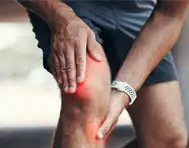Recognizing and Preventing Muscle Cramps
Muscle cramps occur when any of our muscles contract, either forcibly or involuntarily, and then does not relax as it should. This is often referred to as a spasm and can happen for a range of reasons. It is something that the majority of people will experience in their lives, albeit some more than others! Although a muscle cramp will usually only happen for a few seconds, it can last up to 15 minutes. It will rarely ever be longer than this.
Read more
Get Fit Faster with an App
Getting into shape is an enjoyable process for some people, but many people do not find it easy! With so much varying information and advice on nutrition and exercise, it can be hard to know what you should do in order to maximise your efforts.
With the advent of technology it has become much simpler to track your progress when it comes to exercise and also to stay on top of your diet. This is thanks in no small part to the many apps that have been developed for this specific purpose.
Read more
Knee Arthroscopy Surgery
One of the most common surgical procedures that an orthopedic surgeon will carry out during their career is knee arthroscopy. Although this is a very common procedure in the present day, it was not until the 1960’s that it really came into practice. An arthroscopy is the surgical process of either diagnosing or treating an abnormality of a joint in the body. Surgery of this kind can usually be done on an outpatient basis and could require either a general or local anaesthetic. Fortunately, only a small incision is necessary. This means that the remaining scar should only be approximately a quarter of an inch.
Read more
Exercise for Healthy Bones
Preventing an injury is of course always the preferable option to healing an injury! And, there are many things that you can do to help avoid developing a problem.
Read more
Fight Winter Inactivity with Exercise!

A few simple ways of exercising and maintaining fitness during the winters have been listed below:
1. Walking:
Yes! Walking can be fun even in the snow. In fact, walking in the snow tends to burn double the amount of calories than walking on a plain surface as you need to push harder to pave your way through the snow. Remember to wear the winter clothing in layers so that you can pull them off as you get warmer. [1] And while you are walking in the snow, a little bit of slow running or playing around can increase the fat burning and also increase cardiovascular endurance. Make sure it’s all on snow, never ice!
2. Take the stairs or the street:
Read more
Run a Mile to Keep your Smile!

This study contained data from 2600 people who used to perform some form of physical activity in their life. Study age groups were divided into 12-18, 19-34, 35-49 and 50 and older. Finally, 29% of the people were runners at some point of time in their lives.
Read more
Physical Activity May Treat Depression

Recent studies conducted by the University of Bern show that regular physical exercise can help alleviate symptoms of depression, anxiety and stress. Physical activity is known to be beneficial for overall health and prevention of cardiac diseases. The basic cause of depression is the deficiency of a certain chemical known as serotonin. Serotonin is an important chemical in the brain which is responsible for a variety of functions related to mood, sleep and appetite. Thereby, a deficiency of serotonin leads to depression, but what causes this deficiency is yet unknown.
Read more
Exercises to Reduce Back Pain

- Maintain correct posture- poor posture is one of the most common reasons for backache amongst people, especially those having sedentary jobs. A study confirmed that those with back pain compared to people with no back pain and those with a higher intensity of pain had higher tendencies to sway. This means that maintaining good posture is vital to prevent non-specific back pain that can often be disabling if chronic. Habits for good posture are sitting or standing erect, without stooping or hunching the shoulders.
- Play sports- Engaging regularly in sports like swimming, running or walking in waist-deep water helps in maintaining back strength and stability. Studies have found that aquatic exercises are better than land-based exercises in regards to chronic lower back pain control. Read more
Try Endurance Running

As one of the oldest activities, running has been a popular pastime for thousands of years. Recently though, long-distance running has become more popular than ever. To get a better idea of who runs long distances, 1200 ultramarathon runners were sampled in a recent study. Unsurprisingly, the sample group was healthier than the general population. Surprisingly though, half were older than 42. The only common medical issues experienced were knee, foot, or allergy related.[1]
Read more
Exercise Might Reduce Muscle Loss

Read more








